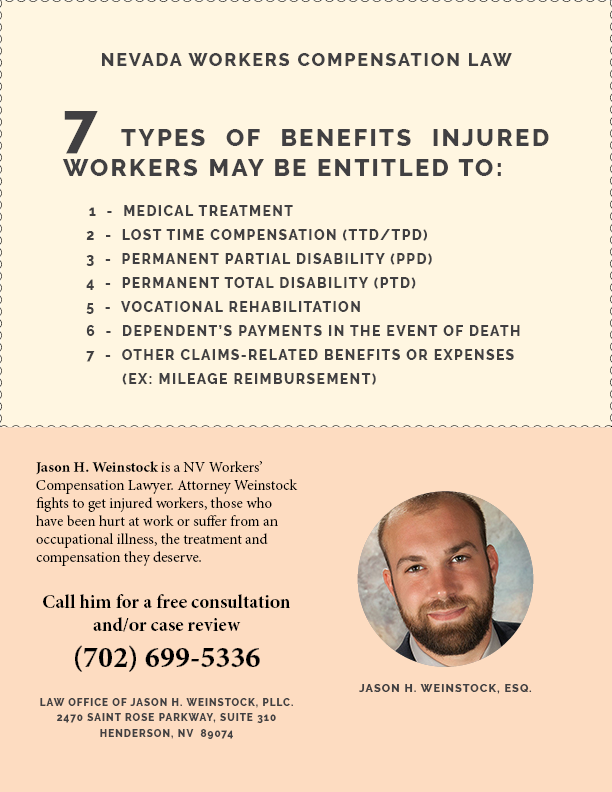Average Monthly Wage for Fiscal Year 2023 increases!
For Fiscal Year 2023, which began on July 1, 2022, the maximum average monthly wage used to calculate workers’ compensation benefits has increased to $7.309.80. This is applicable to injuries on claims filed after July 1, 2022. If you have a claim established already, this increase will not affect your benefits. The maximum temporary total disability benefit in Nevada is 66 2/3 of the maximum average monthly wage. That means that if the injured worker is off work due to the injury for a month, or her employer does not have light duty work within the doctor’s restrictions, she will receive $4,873.20 in compensation benefits that month. The usual 14-day payment will be $2,241.26. Each day in the pay period is counted, including Saturdays and Sundays, when calculating compensation benefits. The daily rate under the new maximum average monthly wage is $160.09
Why is the Average Monthly Wage Calculation important to Injured Workers?
The average monthly wage used to calculate off-work benefits is also an important factor in determining how much money an injured worker will received if she has a permanent impairment, as defined by the criteria in the AMA Guides to Evaluation of Permanent Impairment. If the adjuster sends you a letter with your average monthly wage, and it seems too low, do not neglect to do something about it, even if you are not losing time from work. You could lose a significant amount of money by not making sure that the average monthly wage is as high as it should be when it is time to calculate a PPD award.
Average Monthly Wage if a Claim is ever Reopened.
The average monthly wage at the time of the injury also controls the amount of compensation benefits if the claim is ever reopened in the future. Your original injury may have occurred ten years ago when you were making a lot more money, and you will want that average monthly wage to be used. If you need to reopen your claim now and will be out of work again for another surgery, your benefits will be based on what your income was 10 years ago.
Nevada Workers’ Compensation: How to Calculate the Average Monthly Wage
Remember there are two ways to calculate average monthly wage: 1) 84 days wage history, and 2) an one-year’s wage history. The insurance company must use which ever is higher, when establishing your average monthly wage for workers’ compensation benefits. It does not cost anything to check with a reputable attorney about whether your compensation benefits are calculated correctly and whether you should be proceeding on a reopened claim as opposed to a new claim.























